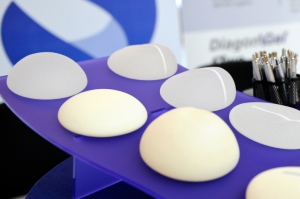 In 1997, a rare type of cancer in the breast was first reported as a “case report” called large cell anaplastic lymphoma (ALCL). In 2011, this rare type of cancer in the breast that is possibly associated with a specific type of breast implant was recognized by the FDA. In 2015, a review article of 173 cases was published in the Plastic Surgery literature.There have been over 500 cases of ALCL reported worldwide. This rare cancer is not associated with the more common types of breast cancer that originate from native breast tissue (glands, ducts).
In 1997, a rare type of cancer in the breast was first reported as a “case report” called large cell anaplastic lymphoma (ALCL). In 2011, this rare type of cancer in the breast that is possibly associated with a specific type of breast implant was recognized by the FDA. In 2015, a review article of 173 cases was published in the Plastic Surgery literature.There have been over 500 cases of ALCL reported worldwide. This rare cancer is not associated with the more common types of breast cancer that originate from native breast tissue (glands, ducts).
ALCL is thought to be associated with “textured” breast implants, both saline type and silicone type. The FDA continues to gather data and study this rare type of cancer, as does the plastic surgery community. Because ALCL is a rare type of cancer, gathering data and determining the best treatment is more challenging. Because ALCL has now been recognized as a disease entity, plastic surgeons will have a higher “index of suspicion” for this problem than previously.
How does ALCL present?
Patients that develop ALCL present with breast enlargement, recognized either by the patient or the physician. Breast asymmetry is very common, so in this circumstance any significant change in breast symmetry warrants further investigation. ALCL can also present as a mass in the breast or the armpit.
Where does ALCL start?
ALCL is thought to start in the breast capsule (scar tissue) around the implant. The capsule is removed as part of the treatment for ALCL. It can spread to other parts of the body if not treated.
What causes ALCL?
The initiating physical factor of ALCL appears to be textured breast implants. From a biologic standpoint, inflammation may be one of the causes. As with many biologic processes, the cause of ALCL may be multifactorial, meaning there is more than one factor, each of which interacts to cause the initiation of ALCL. The exact biologic cause is yet to be defined. To date, no cases have been associated with smooth shell implants.
How is ALCL diagnosed?
ALCL is diagnosed by biopsy and cell (tumor) marker. Most important in diagnosing ALCL is an accurate history and physical exam. A good screening tool for ALCL is ultrasound, which can detect collections of fluid around a breast implant. Ultrasound studies do not diagnose ALCL and only provide guidance for proceeding to biopsy and other studies.
How many cases of ALCL have been reported?
In 2015, a journal article reported 173 cases of ALCL. Based on this report, this type of cancer is rare. There are over 500 cases reported worldwide.
What places a patient at risk for breast implant associated ALCL?
The primary risk factor for ALCL is textured breast implants. Textured implants have a textured or rough surface as opposed to breast implants that have a smooth surface.
Can ALCL usually be treated successfully?
Yes. This breast implant associated ALCL can usually be treated successfully. This type of cancer is considered to be more “indolent” (less aggressive) than other types of ALCL.
Should I get my implants removed and replaced if they are textured?
That decision is made by the patient based on their individual circumstances. The FDA does not recommend routine removal-replacement of textured breast implants at this time.
“Because BIA-ALCL has generally only been identified in patients with late onset of symptoms such as pain, lumps, swelling, or breast asymmetry, prophylactic breast implant removal in patients without signs or symptoms is not recommended.” (From FDA website.)
Will the incidence of ALCL increase?
Maybe. More studies are needed to determine the true incidence of ALCL.
Important points to remember:
- Breast screening is important, with or without breast implants.
- Lifelong follow up is needed for patients with breast implants.
- In patients that have textured breast implants, awareness of ALCL is important.For guidance related to ALCL, seek advice from a qualified physician.
There is also a summary of facts provided by the American Society of Plastic Surgery for your convenience.
If you have additional questions or concerns, please don’t hesitate to reach out to our office for more information.
Previous Post Next Post